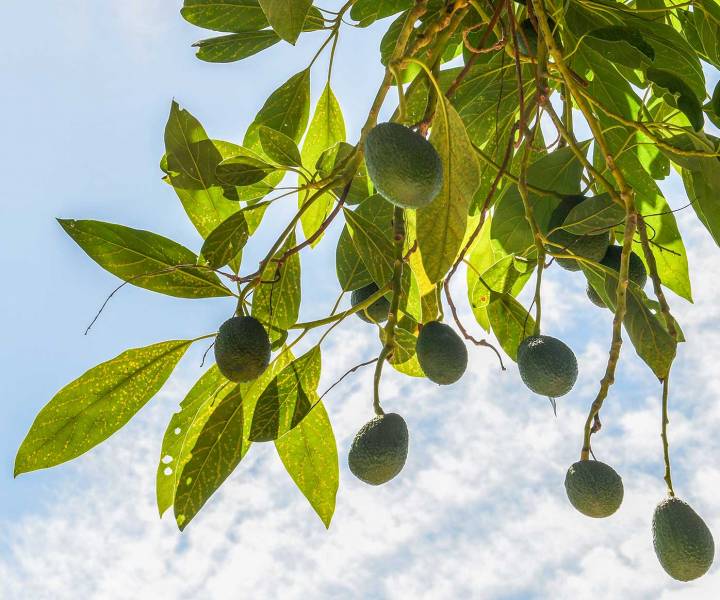Food
Ripe for the picking: avocado farming on the Spanish coast
by Helen Graves

Although Mexico is by far the largest producer of avocados – after all, there is all that guacamole to make – the heavy green pears are now appearing on farms on the Spanish coast. Writer Helen Graves finds out more...
Who could’ve predicted the avocado’s incredible rise in popularity? Australian chef Bill Granger made avo on toast an overnight Instagram sensation and with it came ‘avocado hand’ – an injury inflicted upon the palm when over-enthusiastically removing an avocado stone with a sharp knife. The pear-shaped fruit (actually a berry, botanically speaking) has even got its own emoji. But what effect has the rise in demand had on those who produce avocados? And is our insatiable appetite having an impact on the environment? I travelled to the rocky coastal area of Vélez-Málaga in Spain to find out.
Spain may not necessarily be the first country that comes to mind when we think of avocado farms, but the region has a very similar climate and topographical structure to California (another large producer of avocados). It’s rugged and beautiful, dotted with eucalyptus trees, palms and pencil pines, all swaying gently in the salty coastal air. Despite the proliferation of avocado farms in the area however, the Spanish barely consume the fruit. The UK (along with France) is the most eager consumers of avocados in Europe.

Helping the ecconomy
The Reyes Gutiérrez avocado plantation – established in 1993 – was a pioneer of avocado production in Malaga and the company has transformed the local economy, creating jobs for local people in the surrounding orchards. Prior to the existence of the plantation, people were growing almonds and olives on the land without proper irrigation, which meant production was low, they made little money, and Vélez – at the time – was one of the poorest areas of Spain.
People were leaving to find employment in the larger towns, but now they are able to stay, working in avocado production in one way or another. It’s harvest season from December until the end of May, and on our visit in May, we see local workers picking fruit at one of the Reyes Gutiérrez farms. David Sarmiento, who took over the business from his father, now owns the farm. He has 20 hectares, 10 of which are populated with avocado trees, all of which are 33 years old (it takes three years for a tree to mature before the fruit can be picked).
One fruit-picker named Juan was a truck driver but lost his job during the recession before he came to the farm. ‘Avocados mean I can work again – so I love them!’, he beams, stretching up his long-handled net to catch a fruit from the tree. The length of the harvest season and the need for constant pruning means there is year-round work for people like Juan.
Caring for environment
Growing avocados is not without challenges, however. Researcher Inaki Hormaza heads a group whose work focuses on sustainability optimising production. ‘Our main challenge is irrigation, because we have limited water in this region’, he explains. While avocados require less water than other fruits, the trees are still thirsty in this heat and with superficial roots that lie close to the surface, they need watering daily. The level of water must be ‘just right’ so farmers use tools to measure the humidity of the soil and the width of the tree’s trunk, which expands and contracts depending on their saturation.
‘At the moment we have enough water for the trees if things stay normal, but not if we have a long, dry period’, says Inaki. Sustainability is also a big concern for the avocado farmers here, and they try to grow as naturally as possible. ‘There’s virtually no waste on the plantation since the high quality fruit goes to the fresh market, and the rest goes to guacamole, avocado oil or other products’, says Inaki. This approach continues through to the packaging of the avocados, which at Reyes Gutiérrez are packed into eggshell-shaped holders made from recycled materials.

The original super-food
All this work to produce the avocados we put into our shopping trolleys. But why are they so popular? Aside from their creamy texture and taste, avocados are very good for you. They’re rich in unsaturated fatty acids and provide useful amounts of vitamin B6, vitamin E and potassium among other vitamins and minerals. But it’s the avocado’s versatility that is so striking. Our first taste of avocado in Spain is in a drink called baticate, containing avocado, milk, cinnamon and vanilla sugar. It’s rich but refreshing, with a pleasant sourness. It’s also a perfect foil for the freshest seafood such as crab and prawns; for other fruits including mango; churned into ice cream, and even on top of paella – the success of that last serving is entirely dependent on your feelings about eating warm avocado.
Keeping it simple
Nowadays the most popular way to eat it is on toast. Choose your favourite bread and toast it well, then allow it to rest propped up against a chopping board for 30 seconds or so (this will prevent any sogginess) before spreading on your mashed avocado. Add some crunchy salt, a spritz of lemon juice and a generous drizzle of extra- virgin olive oil. A few chilli flakes, chopped fresh red chilli or very finely sliced spring onion will really make the flavours pop. Don’t forget, there’s a whole community working to produce every single fruit, which makes each bite all the more special.
Now try our avocado recipes:












